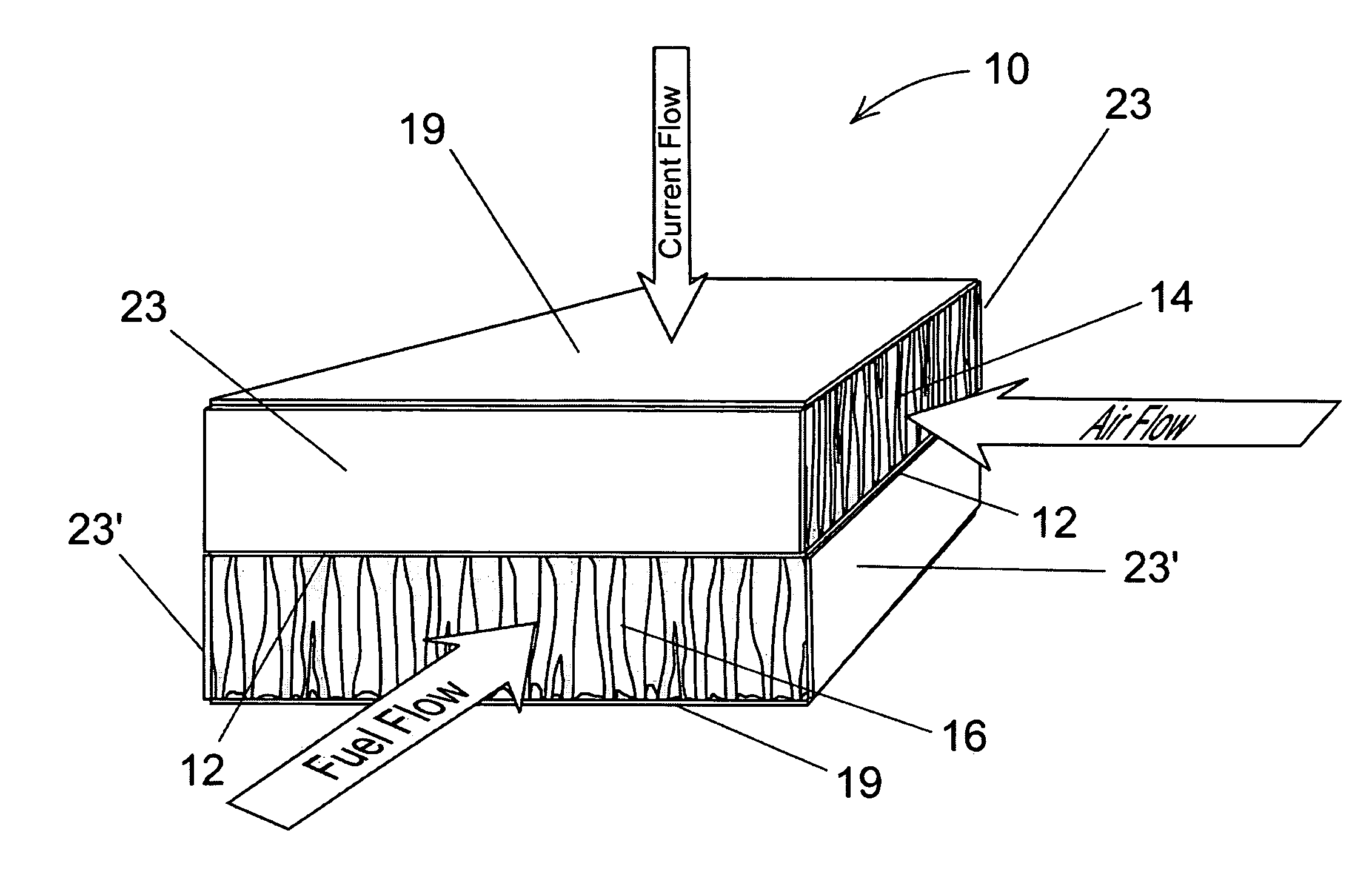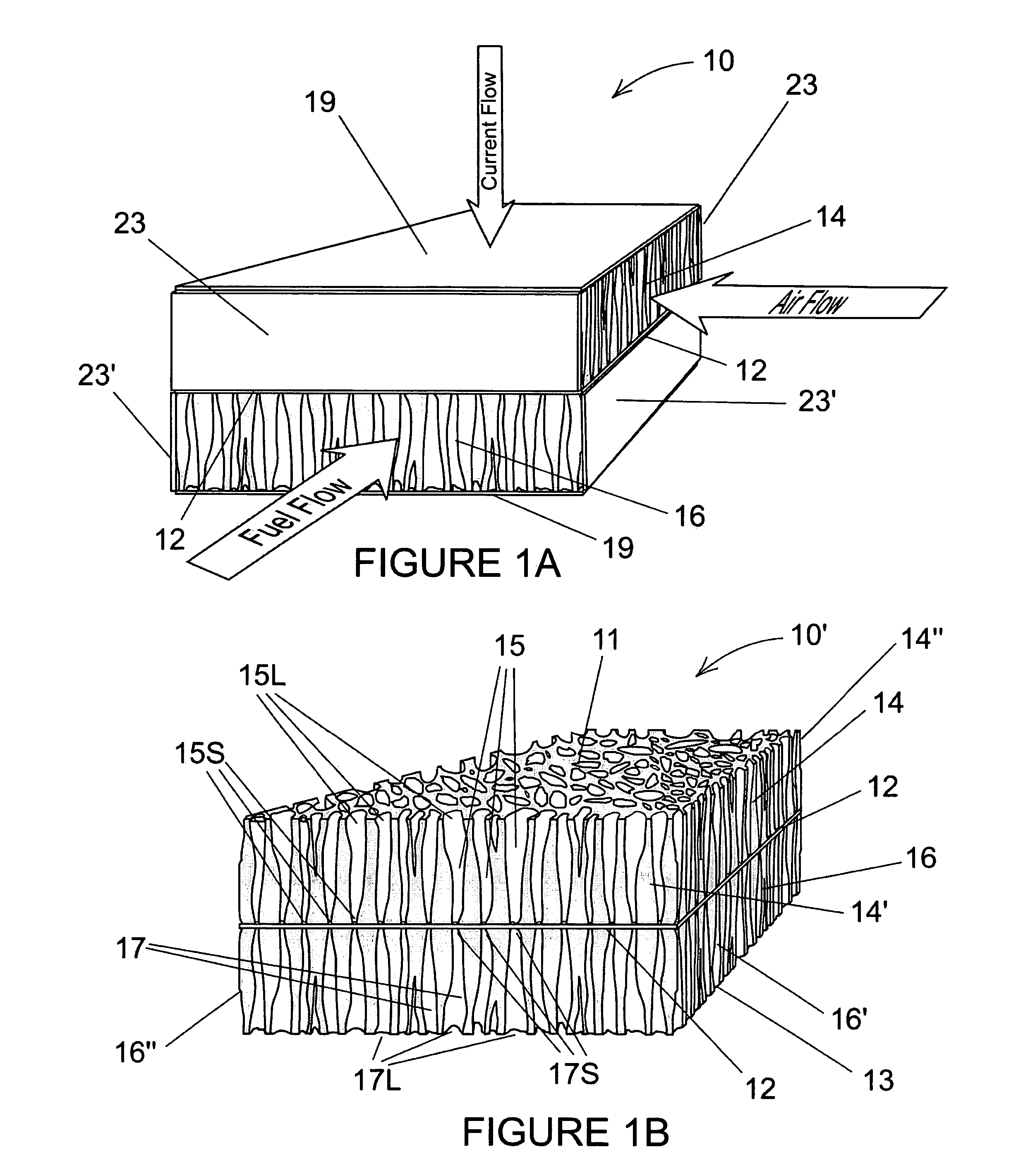Symmetrical, bi-electrode supported solid oxide fuel cell
a solid oxide fuel cell, bi-electrode supported technology, applied in the field of fuel cells, can solve the problems of not providing cell support, complete cell based on moon's technology has not been currently fabricated or tested,
- Summary
- Abstract
- Description
- Claims
- Application Information
AI Technical Summary
Benefits of technology
Problems solved by technology
Method used
Image
Examples
Embodiment Construction
[0037] The present invention addresses the aforementioned difficulties of solid oxide fuel cell (SOFC) fabrication and reliability and weight associated with the anode supported cell design (ASC) and the metal interconnects used to connect separate cells a fuel cell stack. More specifically, the present invention is a symmetrical, bi-electrode supported fuel cell (BSC), shown in the oblique schematic view in FIG. 1A, comprising a monolithic framework 10 including as main operational elements a first electrode scaffold 14, a second electrode scaffold 16, and a thin electrolyte layer 12 that is monolithically disposed between the first and the second electrode scaffolds. The thin electrolyte layer 12 has a thickness of between 2 um and 200 um, and most preferably between 5 um and 25 um. The two outermost exposed surfaces of the first electrode scaffold 14 and the second electrode scaffold 16 each also has a thin electrically conductive ceramic coating 19 deposited on it. The coatings ...
PUM
| Property | Measurement | Unit |
|---|---|---|
| Temperature | aaaaa | aaaaa |
| Length | aaaaa | aaaaa |
| Length | aaaaa | aaaaa |
Abstract
Description
Claims
Application Information
 Login to View More
Login to View More - R&D
- Intellectual Property
- Life Sciences
- Materials
- Tech Scout
- Unparalleled Data Quality
- Higher Quality Content
- 60% Fewer Hallucinations
Browse by: Latest US Patents, China's latest patents, Technical Efficacy Thesaurus, Application Domain, Technology Topic, Popular Technical Reports.
© 2025 PatSnap. All rights reserved.Legal|Privacy policy|Modern Slavery Act Transparency Statement|Sitemap|About US| Contact US: help@patsnap.com



